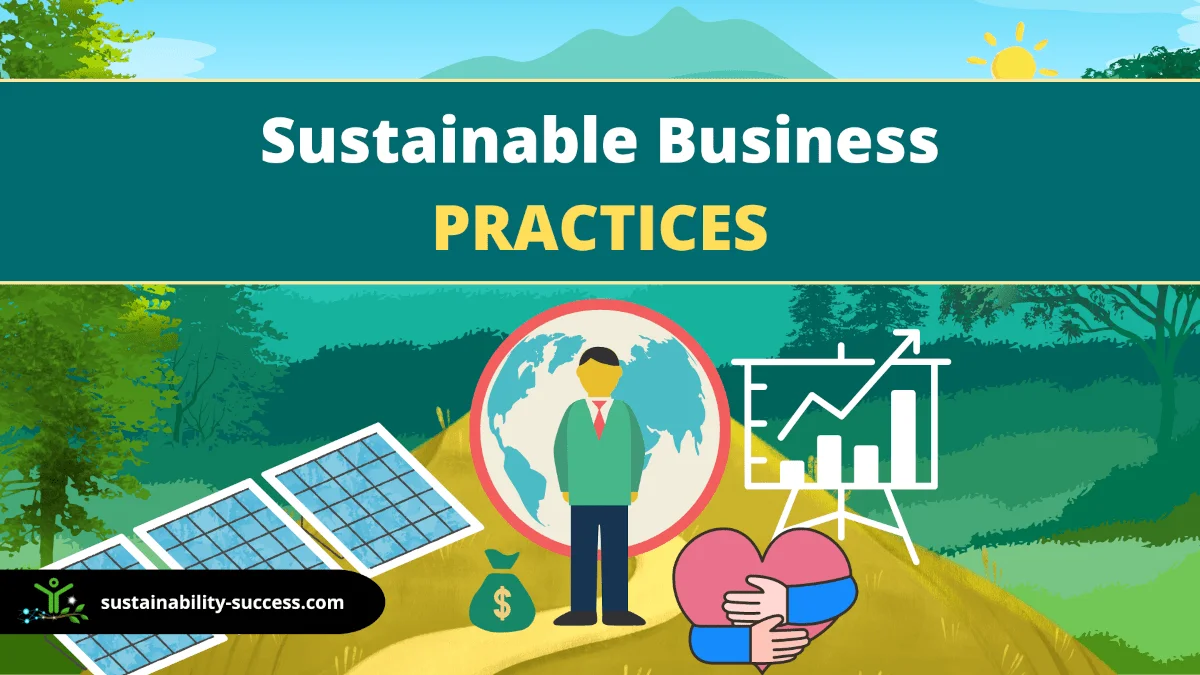How to Run a Sustainable Business: Best Practices for a Greener Future

In the ever-evolving landscape of business, sustainability is no longer a buzzword but a necessity. Imagine your business as a tree—roots firmly planted in the ground, branches reaching for the sky. To thrive, it needs a healthy environment. Running a sustainable business is about nurturing that environment, ensuring that your tree not only grows but also contributes positively to the ecosystem around it. Let's dive into the best practices for running a sustainable business, exploring green business strategies, corporate sustainability, environmental management, and sustainable operations.
Understanding Sustainable Business
What is a Sustainable Business?
A sustainable business is one that operates in a way that minimizes its negative impact on the environment, community, and society. It's about more than just profit; it's about creating value for all stakeholders, including the planet.
Why Go Green?
Going green isn't just about being environmentally conscious; it's also a smart business move. Consumers are increasingly aware of the environmental impact of their purchases. According to a study by Nielsen, 66% of consumers are willing to pay more for sustainable brands.
Best Practices for Running a Sustainable Business
1. Implement Sustainable Operations
Sustainable operations involve integrating eco-friendly practices into your day-to-day business activities. This could mean using renewable energy sources, reducing waste, or implementing energy-efficient technologies. For example, companies like Patagonia have made significant strides in sustainable operations by using recycled materials and implementing fair labor practices.
2. Develop a Corporate Sustainability Strategy
A well-defined corporate sustainability strategy is crucial. This involves setting clear goals, tracking progress, and continuously improving your practices. Companies like Unilever have set ambitious sustainability goals, aiming to reduce their environmental footprint by half by 2030.
3. Engage in Environmental Management
Environmental management is about understanding and minimizing the environmental impacts of your business. This could involve conducting environmental audits, implementing waste management systems, and adopting eco-friendly packaging solutions. For instance, Coca-Cola has committed to making all its packaging recyclable by 2025.
4. Foster a Culture of Sustainability
Creating a culture of sustainability within your organization is essential. This involves educating your employees about the importance of sustainability and encouraging them to adopt eco-friendly practices. Companies like Google have made significant investments in renewable energy and sustainable practices, fostering a culture of sustainability among their employees.
5. Collaborate with Green Partners
Collaborating with green partners can help you achieve your sustainability goals more effectively. This could involve partnering with suppliers who share your commitment to sustainability or working with environmental organizations to implement green initiatives. For example, IKEA has partnered with various organizations to promote sustainable living and reduce its environmental footprint.
Implementing Sustainable Practices
Energy Efficiency
Energy efficiency is a cornerstone of sustainable operations. This could involve using energy-efficient lighting, implementing smart building technologies, or investing in renewable energy sources. For instance, Apple has committed to becoming carbon neutral across its entire business, including its supply chain, by 2030.
Waste Management
Effective waste management is crucial for reducing your business's environmental impact. This could involve implementing recycling programs, reducing packaging waste, or adopting circular economy principles. Companies like TerraCycle have pioneered innovative waste management solutions, turning waste into valuable resources.
Sustainable Supply Chain
A sustainable supply chain involves working with suppliers who share your commitment to sustainability. This could involve sourcing materials from ethical suppliers, implementing fair labor practices, or reducing the carbon footprint of your supply chain. For example, Nike has made significant strides in creating a more sustainable supply chain, focusing on innovation and sustainability.
The Benefits of Running a Sustainable Business
Cost Savings
Implementing sustainable practices can lead to significant cost savings. For instance, energy-efficient technologies can reduce your energy bills, while waste reduction programs can lower your waste disposal costs.
Enhanced Brand Reputation
Consumers are increasingly aware of the environmental impact of their purchases. By adopting sustainable practices, you can enhance your brand reputation and attract environmentally conscious customers.
Attracting Talent
A commitment to sustainability can also help you attract and retain top talent. Employees are increasingly looking to work for companies that align with their values, including a commitment to sustainability.
Regulatory Compliance
Adopting sustainable practices can help you comply with environmental regulations, reducing the risk of fines and legal issues.
Conclusion
Running a sustainable business is not just about doing the right thing; it's also about creating a more resilient and successful business. By implementing sustainable operations, developing a corporate sustainability strategy, engaging in environmental management, fostering a culture of sustainability, and collaborating with green partners, you can create a business that thrives while contributing positively to the environment and society.
So, are you ready to take the first step towards a greener future? Remember, every small change you make can have a significant impact. Let's build a sustainable future together.
FAQs
What is the difference between sustainable business and green business?
- While both terms are often used interchangeably, a sustainable business focuses on long-term strategies that balance economic, social, and environmental goals. A green business, on the other hand, primarily focuses on environmental practices.
How can I measure the sustainability of my business?
- You can measure the sustainability of your business by tracking key performance indicators (KPIs) such as energy consumption, waste generation, carbon footprint, and employee engagement in sustainability initiatives.
What are some common challenges in implementing sustainable practices?
- Common challenges include initial investment costs, resistance to change, lack of knowledge or expertise, and the need for long-term commitment.
How can I engage my employees in sustainability initiatives?
- You can engage your employees by providing training and education on sustainability, creating opportunities for them to participate in green initiatives, and recognizing and rewarding their efforts.
What role does technology play in sustainable business practices?
- Technology plays a crucial role in sustainable business practices by enabling energy efficiency, waste reduction, and data-driven decision-making. For example, smart building technologies can optimize energy use, while data analytics can help track and improve sustainability performance.


Belum ada Komentar untuk "How to Run a Sustainable Business: Best Practices for a Greener Future"
Posting Komentar